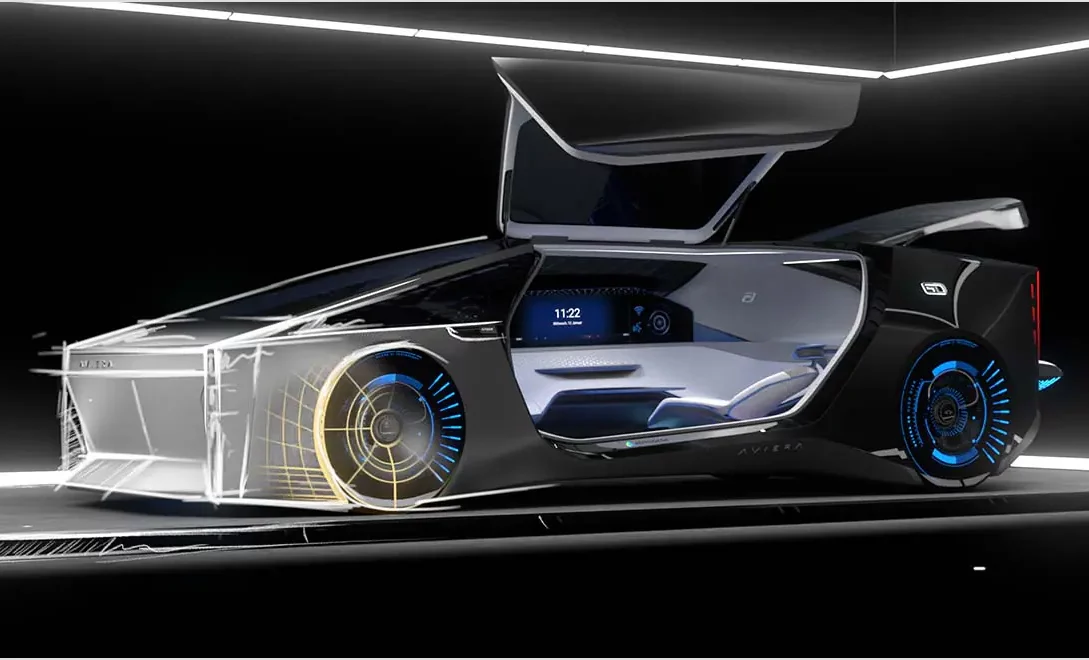Automotive design is the process of developing the appearance (and to some extent the ergonomics) of motor vehicles. Designers typically draw inspiration from other design disciplines such as industrial design, fashion, home furnishings, and even architecture.
Engineers used to focus solely on the functionality of a car, often creating models that were not aesthetically pleasing. Today, stylists and engineers work together to make a functionally superior vehicle that will appeal to consumers.
Form
The functional design and development of a modern motor vehicle is typically done by a large team of designers (also called industrial designers), engineers, and other specialists. However, the visual appearance or styling of a vehicle is usually handled by a separate group of designers.
The visual appearance of a vehicle is influenced by the target market and consumer taste. For example, since women now make up the majority of car buyers, designers are looking at gender neutral or feminine designs and choosing more muted colors for exteriors. In addition, automotive styling is influenced by technology and trends.
Styling is a complex process that includes the intangible as well as the tangible. For example, a vehicle’s HMI, UI/UX, and acoustics are all aspects of a vehicle that require a stylist to ensure that they reflect the brand image and connect with expectations. The style of a vehicle should also be consistent throughout the production process.
Function
Automotive design is about more than just aesthetics; it’s also about ensuring that a vehicle meets certain functional requirements. Vehicles need to be safe and reliable for passengers and drivers, and this requires a great deal of testing.
This is why it’s important to have the right tools and software in place. Automating the process can help to reduce errors and ensure that all of the parts are working properly. It’s also important to have a company culture that values creativity and innovation. This will help to encourage designers and motivate them to do their best work.
Automotive stylists often work with a team of professionals from different engineering disciplines. They need to be able to balance aesthetics with practical concerns, such as airflow and ergonomics. They also need to consider the market and consumer demand. This may mean offering a range of trims for a car model so that it appeals to a broad range of buyers.
Emotion
Even everyday cars are able to evoke emotion in their drivers. Whether it’s a fondness for the small, cute Fiat 500 that their driver refers to as their baby, or a comforting feeling delivered by the VW Transporter that can fit all of their day-to-day belongings and get them to work without a fuss.
The car industry has moved from designing cars for their function to focusing on the emotional experience. Designers are able to design a vehicle for specific emotions such as success, power and wealth. The emotional design is also able to inspire the consumer to seek the new feature that they may feel is necessary. For example, the designers could make a car look like a Mustang to inspire the emotions of speed and aggression.
It takes a lot of different specialized skills to be an automotive designer. They need to be able to think of the big picture and all of the components that go into making a car run smoothly. They need to be able to draw, sketch and use the latest technology to create the product concept that will ultimately become a car. They work closely with other automotive and mechanical engineers to bring that concept to life.
Style
The design process is not just creative but also a scientific and technical endeavor. There are many factors that must be taken into account when designing vehicles including safety, crash-worthiness and stability. This is why automotive designers work closely with engineers.
Generally speaking, there will be a team of people involved in the styling process including a chief designer, exterior and interior designers. There may be a trim and color designer involved as well. For smaller manufacturers, the entire team might be handled by one person.
Creativity should be highly valued in any design department. It is important that the people in your design team have a strong desire to create something new and innovative. There should be enough resources for them to use and the company should invest in software, technology, model-making and 2D and 3D drafting. Investing in these things will allow your design department to produce quality designs and reduce costly errors.




